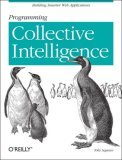Apple recently released an updated preview of Java 6, but only for 64-bit Intel Macs running Leopard. With the company remaining stubbornly silent on its future Java plans, nobody knows whether 32-bit Macs or the Tiger operating system will ever be supported.
For those developers who don’t want to be forced to upgrade to Leopard or to discard their perfectly adequate CoreDuo Macs, there is an alternative to playing Apple’s waiting game thanks to the efforts of Landon Fuller and his SoyLatte project.
Getting Started
SoyLatte is an X11-based port of the FreeBSD patchset for Java 6. This gives you a non-Apple JDK solution right now and on your terms (no hardware or software upgrade required). The only thing that SoyLatte lacks is Apple’s polished native look-and-feel for Swing and AWT applications (there is no seamless integration with the OS X desktop). This is because it uses X11 for display purposes (in the same way that the Mac port of OpenOffice works). If you are doing non-GUI development none of this will matter to you.
Download and installation of SoyLatte is straightforward. It’s just an archive, containing the pre-built JDK binaries, that can be dropped anywhere you please (mine is under /usr/local). Change your environment variables (JAVA_HOME, PATH, etc.) as appropriate and you are ready to go for command-line development.
Developing
My reason for requiring Java 6 was to build and hack Hudson. Hudson is Kohsuke Kawaguchi‘s open source, extensible continuous integration server. Hudson will run on Java 5 but it requires Java 6 for development. To make Mac-based development on Hudson feasible I would have to get SoyLatte to play nicely with IntelliJ IDEA and Maven.
Integrating SoyLatte with IDEA was a piece of cake. It’s just a matter of adding a new JDK in the settings dialog (just point it at your installation directory). I did have to go back and manually add the SoyLatte JRE libs to the JDK classpath as these were not picked up automatically (resulting in the IDE not being able to find classes like String and ArrayList), but once that was done everything worked perfectly. Crucially, even though I was using Java 6 classes and tools, I was still running the actual IDE using Apple’s Java 5, so I didn’t have to use X11.
Running Maven from the command line presents no new problems. It will just use whichever JDK JAVA_HOME points to. Unfortunately the IDEA Maven plugin uses whatever the IDE is using and doesn’t allow this to be changed. This is in contrast to IDEA’s Ant support, which allows the JDK to be specified explicitly. The inconsistency is probably because the Ant plugin was written by JetBrains whereas the Maven plugin is a community contribution. Running IDEA itself under SoyLatte would address this issue but, for me at least, using Maven from a terminal is preferable to running IDEA under X11.
